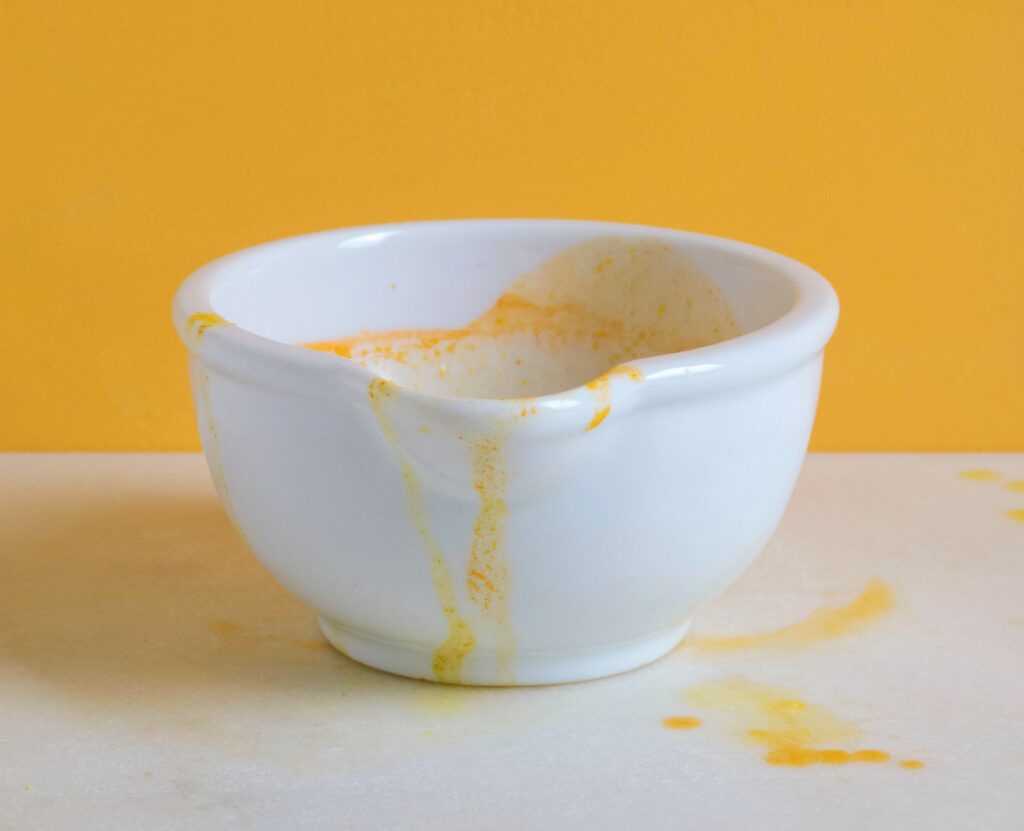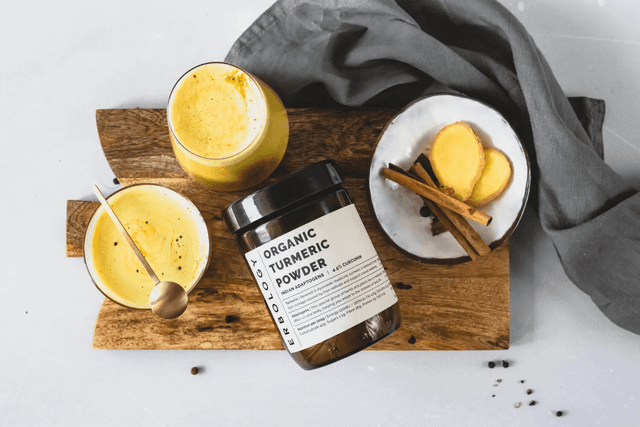03 Jun 2021
What’s the best way to take turmeric: tea, powder or capsules?
What is turmeric?
If you are a regular cook or enjoy Indian food, you probably have a little jar of turmeric sitting in your spice cupboard. Instantly recognisable thanks to its bright, golden-yellow colour, turmeric has an aromatic taste and fragrance.
In cooking, turmeric is used in curries and spiced dishes to add flavour and colour. It’s also often used as a dye (and anyone who has ever spilt a sauce containing turmeric will know just how effective a dye it is!).
The powdered spice we often use in cooking is made from the root (or, more accurately, the rhizome) of the turmeric plant. Turmeric is a member of the same family as ginger, which explains why they look rather similar.
It’s actually a rather lovely flowering plant, although the flowers inevitably get less attention than the famous roots.
Although it has been used for generations in Ayurvedic medicine, the Western world has only recently become interested in turmeric as a health food.
Turmeric is an adaptogen, which means it has a modulatory effect on the body. For instance, if you are feeling stressed, it can help relax you, but if you’re feeling sluggish it can help energise you.
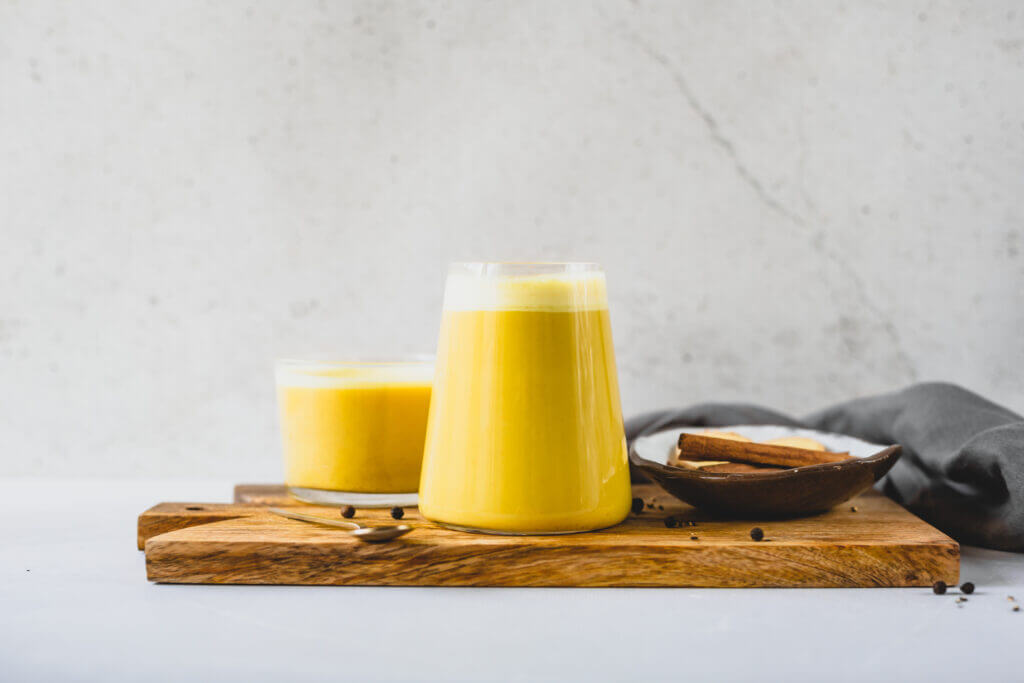
Curcumin
Alongside its adaptogenic properties, the main reason why turmeric has attracted attention as a health food is down to one bioactive compound, called curcumin. It’s a polyphenol, and scientists have spent a lot of time studying its potential health effects.
Curcumin is thought to be an antioxidant. More impressively, it shares a characteristic with one of the moist powerful antioxidants around: vitamin E. Both vitamin E and curcumin are ‘chain-breaking antioxidants’.(1)
This means that they can disrupt the chain reaction which causes free radical damage to spread. (You can find more detailed information on the antioxidant chain reaction in our article all about antioxidants.)
But perhaps the most well-known benefit of curcumin is its anti-inflammatory properties.
We’re going to hit you with some complicated-sounding chemical names now, but bear with us as it’ll help explain how curcumin works!
In many diseases, inflammation is regulated by a substance called Tumor Necrosis Factor α (TNF-α). This in turn is controlled by a transcription factor, NF-κB (a transcription factor is like a switch which turns certain genes on and off).
If you can stop NF-κB’s from switching on inflammation-causing TNF-α, then you are able to dampen down the body’s inflammatory response. And this is precisely what curcumin does.(1)
Scientists have noted that inflammation is present in many diseases, from obesity to depression, but they do not yet fully understand the role inflammation plays.
To find out more, you can also check out our article on turmeric’s impressive health benefits.
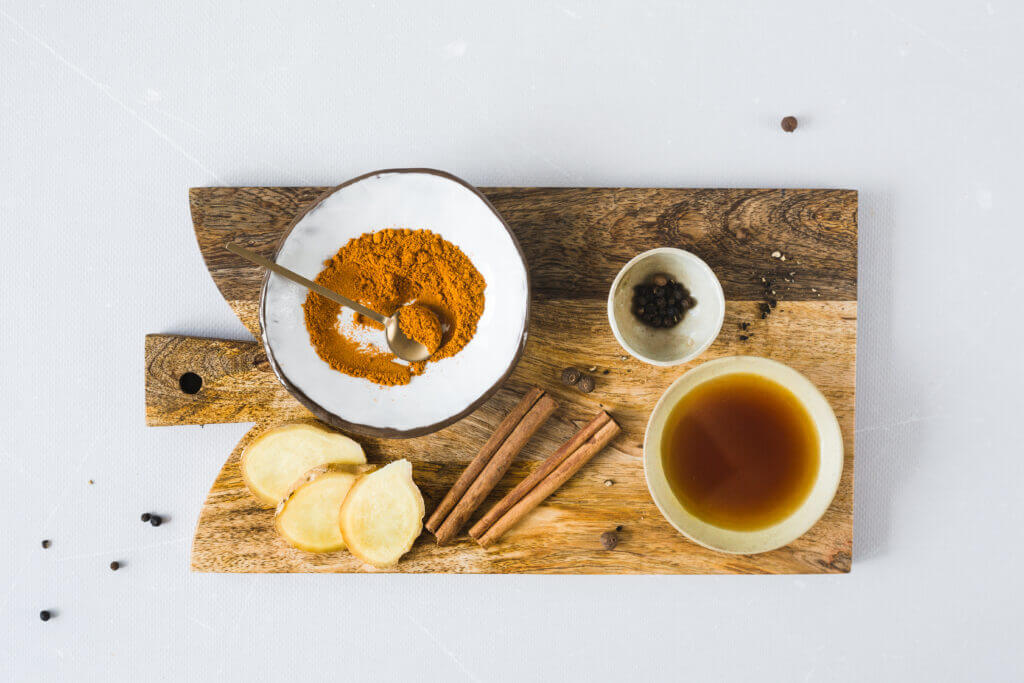
How to take turmeric
Turmeric has a major advantage over many other adaptogens in that it has a naturally delicious flavour, Hence why it is used in so many popular dishes!
This means that there’s no need to hide or mask the flavour with other ingredients. In fact, turmeric’s flavour is one to celebrate.
Before we get into the various options available, there’s one important point we should mention.
Turmeric and black pepper
While these two spices make a fabulous flavour combination, there’s another important reason to pair turmeric and black pepper together.
Curcumin, despite having so many potentially positive effects on our bodies, is actually not very easy for us to absorb. In official terms, it has ‘low bioavailability’.
However, pairing turmeric with black pepper can increase curcumin’s bioavailability.
This is down to a compound called piperine which is naturally present in black pepper.
One study looked at the effects piperine on curcumin absorption in both humans and rats. The researchers found that piperine increased curcumin’s bioavailability by 2000%, with no adverse effects.(2)
The lesson? If you want to get the most from your turmeric, always pair it with a dash of black pepper.
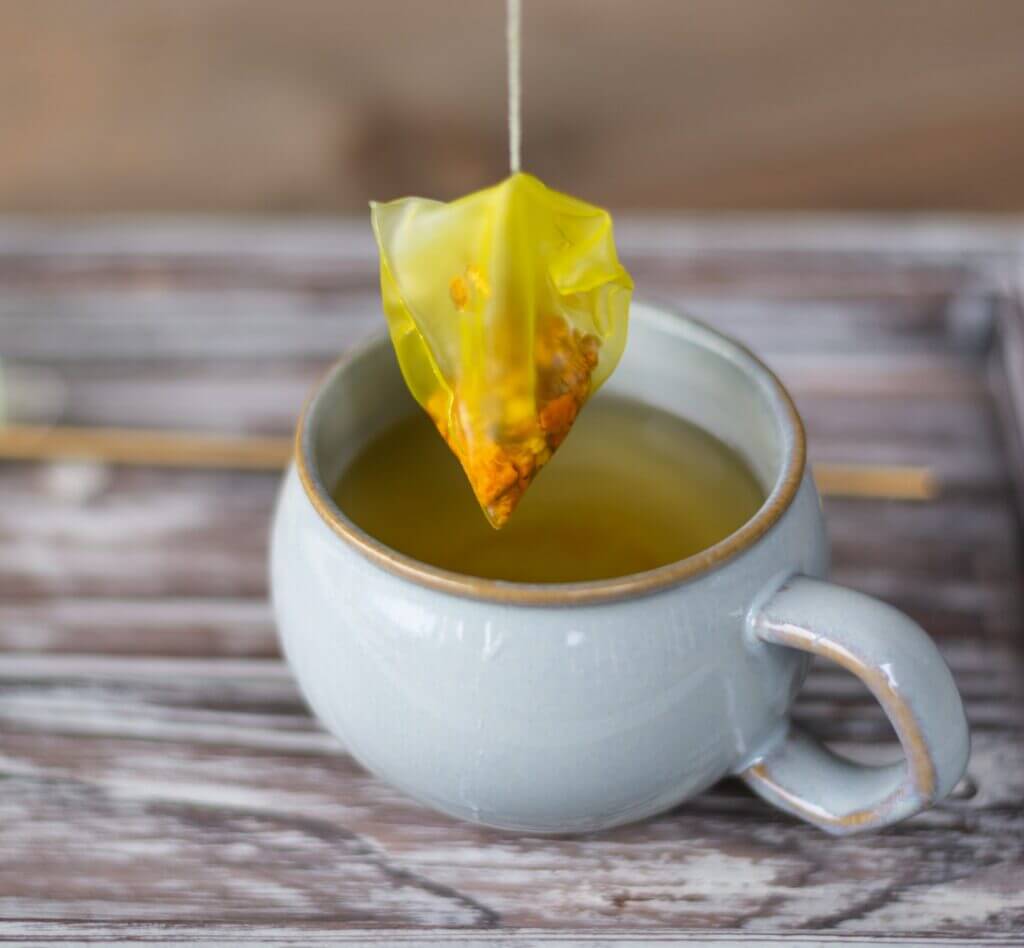
Turmeric tea
Consuming turmeric as a tea or infusion is one of the oldest ways of taking it, and one of our favourites.
There is an important distinction to make between homemade turmeric tea and tea bags or tea blends which contain turmeric.
If you would like to make turmeric tea at home, you can do this easily by adding a couple of heaped teaspoons of our Organic Turmeric Powder to hot water and leaving to steep for 5-6 minutes. The powder doesn’t dissolve but will stay suspended in the water. If it sinks to the bottom, just give it a quick stir.
It’s also an opportunity to add in any other flavourings you like; we love to add ginger, lemon or orange to our brew. You could also add a small amount of honey, if you prefer your tea a bit sweeter. (And of course, don’t forget the black pepper!).
Pre-made turmeric teas
If you are considering a pre-made tea blend, we recommend you take a careful look at the label to see how much turmeric is actually in the product.
While some high-quality turmeric tea bags contain only pure turmeric (and are therefore a convenient way to make your tea), others contain very little turmeric. Here, it’s used predominantly as a flavouring.
A brief look at a few tea makers shows that you can expect around 31 - 50% of your tea to actually be turmeric; significantly less than if you make it yourself with turmeric powder.
This is, of course, absolutely fine if you’re only looking for the flavour. However, if you are interested in curcumin’s health benefits, we’d recommend making your own tea.
When it comes to the question of using tea bags or straining out the turmeric powder, it’s really a matter of preference. If you prefer a smooth tea, by all means strain the powder out.
However, if the texture doesn’t bother you, it’s our opinion that you’re more likely to absorb turmeric’s goodness if you drink the whole lot.
Related reading
